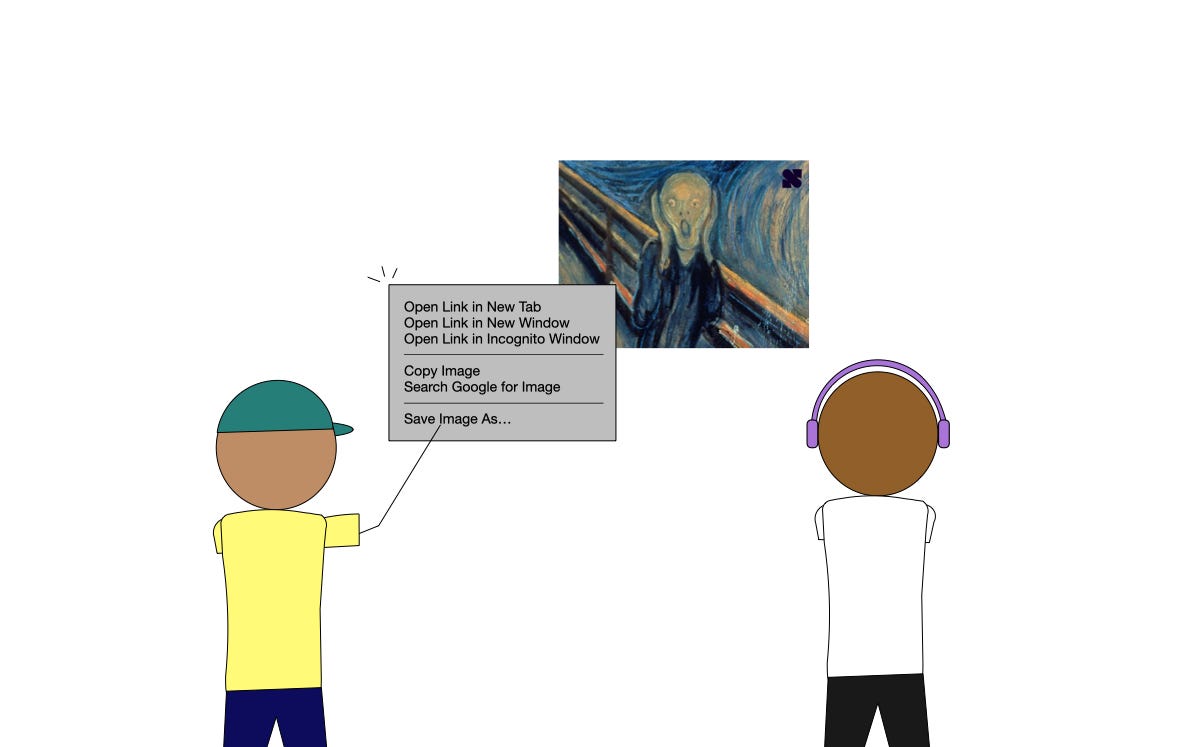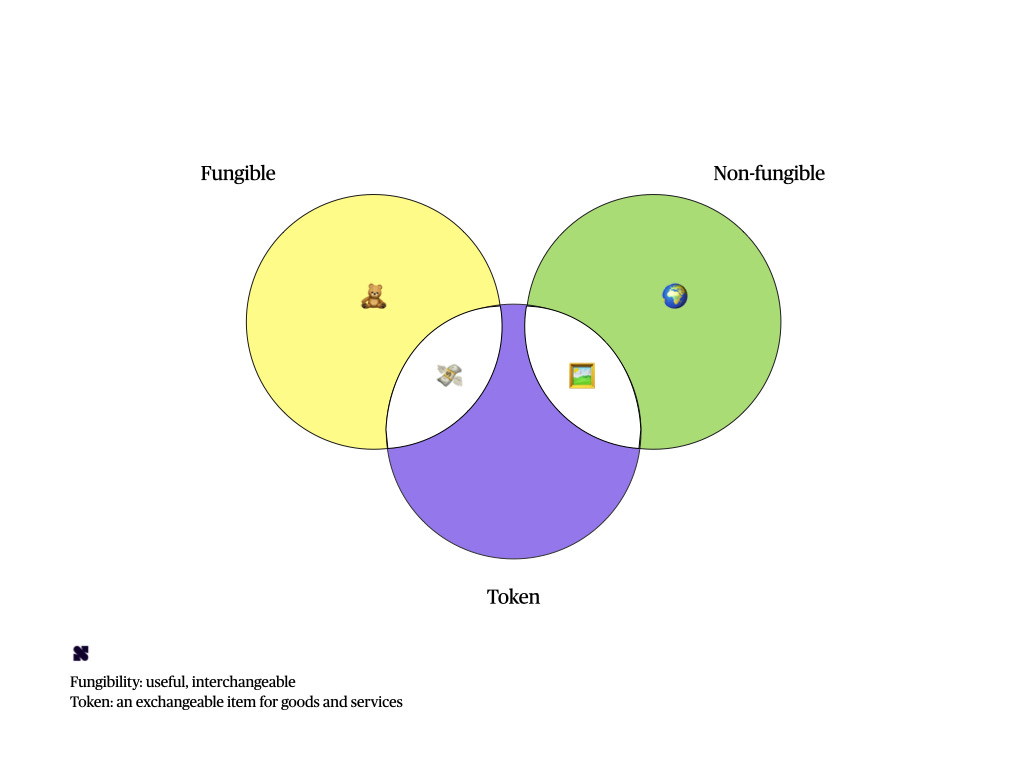I.
The year is 1467*.
In a small town in Italy, a father to a reserved and creative 15-year old boy sends him to be apprenticed under an artist. Little did they know this singular act would drastically turn his life around, forever.
This boy grows up to become the Leonardo di ser Piero da Vinci. And whether you’re an art aficionado or not, you’ve probably heard of his famous Mona Lisa—the painting of a young woman with a wry smile who has us thinking: what is she thinking?
But what about his Last Supper? Vitruvian Man? Or even his Salvator Mundi, which was purchased for a whopping $450 million? Now that’s an impressive catalogue of work.
Known as one of the most revered artists to date, it makes one wonder — what makes art valuable? As with many other things in life—money inclusive, as we’ve discussed here—value is an elusive thing. It’s subject to the whims of the times, culture and the people.
I’ve always found the Arts endearing. After all, I was the only Science student that took Literature classes back in secondary school because the teacher had insisted on it.
“You don’t have to do the tests or assignments, just join us,”—or some variation of that—he had said to me after someone had tattled and shown him a short story I had written.
Perhaps this is why the concept of non-fungible tokens, in its most cliche/mainstream state, excites yet frightens me. Perhaps this is why I’ve done a deep dive to question and poke at it, trying to peel back its layers, especially at its most fundamental.
Buckle up, my friend.
II.
Except in the unlikely chance that you've been living under a rock, you've come across non-fungible tokens (NFTs). NFTs have become a buzzword in mainstream media and lingo.
But what makes them non-fungible? What makes them a token?
I'll tie it all together with this sketch:
etymology: fungible comes from Medieval Latin fungibilis “useful, interchangeable,” used especially in the legal term rēs fungibilēs, “fungible things, interchangeable items.”
Fungibility, as a characteristic, is the ability of an item or asset to be interchanged with another of its kind. This is typified in the sketch above by a mass-produced teddy bear, which we can easily replace with another at the store. But it's not a token because we cannot easily exchange it for goods and services.
A token is an exchangeable item for goods and services, and digitisation on the blockchain ascribes this attribute.
Therefore, we can describe a fungible token as an asset that can be exchanged with another of its type but can also be used to pay for a service. The most familiar example is paper money—whether a Naira or a Dollar note. If you handed me a dollar bill, and I later returned another of the same denomination, I've replaced the exact same thing. After all, the same note looks and acts the same.
The flip side brings us to our main topic: non-fungible tokens.
Going by the reverse of the above definition, we cannot ideally substitute a non-fungible item. Essentially, it's one-of-a-kind. Like our stunning planet earth. But it's not a token because—well—you get the point already. I can’t exactly use our planet as currency.
A non-fungible token, on the other hand, is indeed one-of-its-kind but also has exchangeability thanks to the blockchain.
So who determines value?
Well, that's what makes NFTs even more interesting—their speculative nature. Each individual gets to decide what is unique and sacred to them. The price is pegged to the price its buyer is willing to purchase it for, unlike fiat currency, which has been made universally admissible. This speculation is part of what makes NFTs appealing as a potential investment—the Veblen effect, which plays into the fact that it can be re-sold or re-used within the blockchain ecosystem for potentially more than it costs.
However, the unique feature of NFTs is their existence on the blockchain, a technology that is immutable and shows true ownership. We've gone through how the blockchain keeps records in an irrevocable digital public ledger in previous essays. Because of this, we can tell with absolute certainty who owns a specific non-fungible token.
And so, one of the widespread use cases of NFTs can be found in digital art and gaming.
I particularly find what Zed Run does with digital horse races striking, although I'm not much of a gamer. Unlike a regular game, the true owner of the winning e-horse (as seen on the blockchain) can take home the winnings without real-life endangerment to horses. Beyond this, there's a lot of integration across games within the blockchain technology, such that owning certain items as NFTs can be transferred across different games by different makers. It's genuinely a rabbit hole.
Another use case is within the music industry. A good example is 3LAU, a musician and producer, who had a significant cash-out with his NFTs-as-otherwise-unreleased-music. He remains hopeful that this could be a game-changer in how entertainers relate directly with their core fans with no middle-man needed. He even envisions a future where fans can earn royalties through NFT ownership.
"When you own a piece of music as art, as a fan, you should actually own that music." — 3LAU
And this is an important caveat to note about NFTs.
They're more than a piece of art—in whatever form. In a sense, they aren't necessarily representative of the image or song. What they really represent is the record of ownership. Pieces of digital art just happen to be the most popular initial representation of NFTs.
However, they can be anything of value that is non-fungible such as domain names (see ENS domains), in-game assets, music, real estate in the metaverse, etc—all digital and made exchangeable via tokenisation on the blockchain.
Because a common criticism is that perhaps a photo of the Mona Lisa can be taken while visiting the Louvre. Yes, but only one person has the original.
Sorry.
III.
"The aim of art is to represent not the outward appearance of things, but their inward significance." — Aristotle.
I can't help but agree with this sentiment.
Art, by itself, has no objective value. The reason a painting moves us isn't because of the brilliance of the artist's strokes or the specific use of the different shades of purple we didn't realise existed. It moves us because it makes us feel something—anything—at our very core. This inanimate thing can connect us not just to our inner self, but also to others like us.
It makes us realise we're not so alone after all.
But there's something even more special when we own this piece of art; an intangible feeling. Things are just things, yet we enjoy the sense of possessing them. This is significant for some, certainly not everyone. It depends on one's preference, the level of Maslow's hierarchy of needs, relationship with status symbols, etc.
To know that we have a beautiful thing, if only for a brief moment, in a world that feels so ephemeral, is perhaps one of life's smallest pleasures.
Research has also shown that art has observable effects on our brain and nervous system.
Beyond stimulating our visual cortex, experiencing art, in its several forms, also stimulates our autonomic nervous system, subsequently leading to the release of adrenaline.
Goosebumps.
Also, through the brain's mirror neurons—which are involved in our sense of empathy as well—we momentarily place ourselves within a piece of art as we behold it.
No wonder it's a discipline that has stood the test of time.
Words. Music. Paintings.
Art is what makes us stop in our tracks and marvel—where in that split second, our lives, with the worries that plague them, fade into the distance. We are, at once, soothed.
This is me speaking as an artist, though.
There are others, perhaps many more, who count on a tangible use of art existing and speculate on it by purchasing these things with the hope that utility will strengthen over time. To some of us, the pieces and our connection to the creators might be priceless, so we need the speculators to establish a price and provide liquidity for them in a market of buyers and sellers. Tokenisation and digitisation make speculation easier, and that is why it has dominated the narrative surrounding NFTs.
For me and perhaps you, art provides a reprieve from the tedium and drudgery of reality.
And is that not, by itself, a form of utility?
IV.
So, what does the future of NFTs look like?
In its use case as a pure form of artistic expression (minus the scammers and opportunists), I'm not surprised with its overall response. There's a valid reason why the colloquialism 'starving artist' exists. Everyone knows it's not the easiest thing to get a work of art sold. How much more a digitalised, somehow less tangible one?
I suspect NFTs might take a while to catch on.
But could it indeed be the future of the creator economy—art, music, even movies? (I'd sure love to demonstrably own a copy/piece of and rights to The Prince of Egypt or Memoirs of a Geisha, two of the greatest movies ever, in my humble opinion). Will the use of NFTs traverse culture and seep into the fabric of our reality as we know it? What brilliant use cases can we find in industries such as healthcare or agriculture?
Beyond art, as noted above, many inherently useful things, such as domain names and tradable in-game assets, are already being issued as NFTs. NFTs are really just digital assets that are unique. While they can be copied, ownership rights to the original copy can be demonstrated when necessary (e.g., to gain exclusive access to something, you can be asked to prove your ownership of an NFT by signing in with your private key).
I guess you and I will have to wait to see how this all evolves, but it's already clear that it's not nothing, and NFTs will be a significant part of asset ownership in our increasingly digital future.
Subscribe here if you haven’t already:
*: estimated timeline
Fun fact:
Did you know Leonardo da Vinci was about 50 years old when he started painting the Mona Lisa? I guess it's never too late to be great.





This is so cool I must commend. I thought Da Vinci started to make names during young age. He did a lot in the world of medicine and engineering too, with his imaginative drawings that were later brought to life... A great man indeed✨
A wonderful piece!